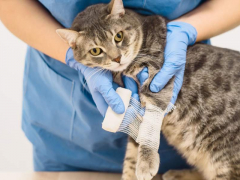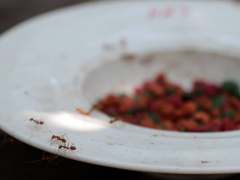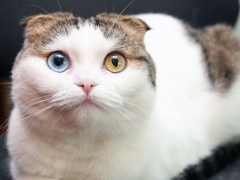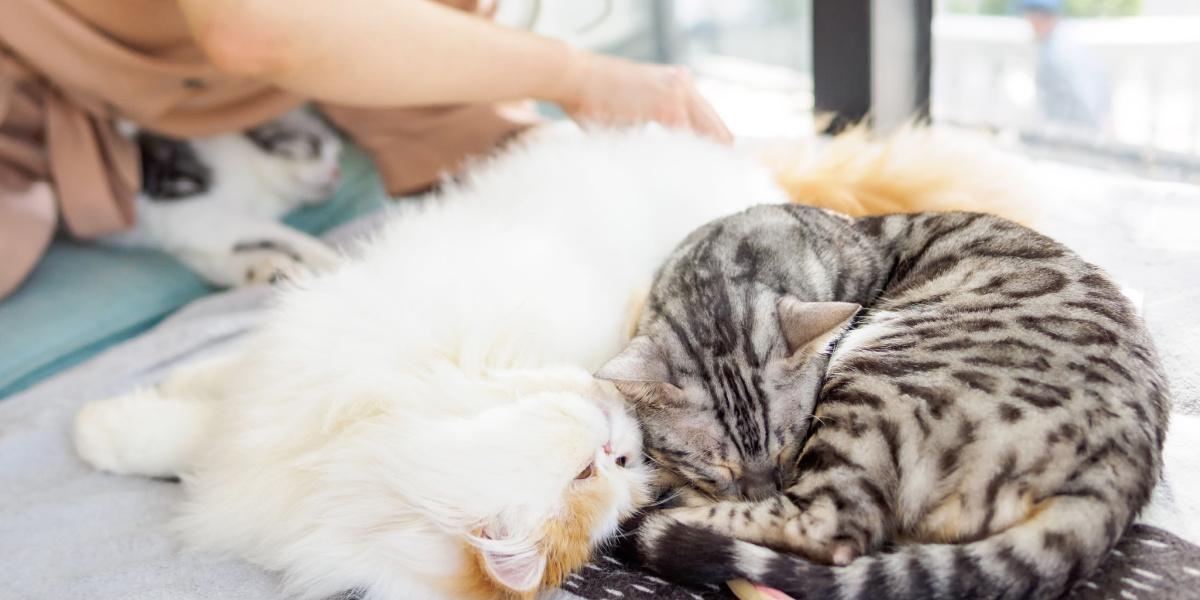
Most cats are fastidious in their cleaning habits and independent of character, so it can be a real conundrum when you are suddenly faced with cleaning their behind. After using the litter box, cleaning their own bottom is the usual procedure, so why has your cat stopped doing this?
Perhaps they are getting older and less agile, they have had some loose stools, or they’ve just got themselves in a bit of a state for no apparent reason. Of course, some cats are easier to clean than others.
Kittens and older cats that resent grooming can present a real challenge, and the stress of it all might leave you tearing your hair out rather than cleaning theirs! But fear not; here are some simple steps to help you on your quest to spruce your cat back to their former glory.
1. Practice Gentle Handling
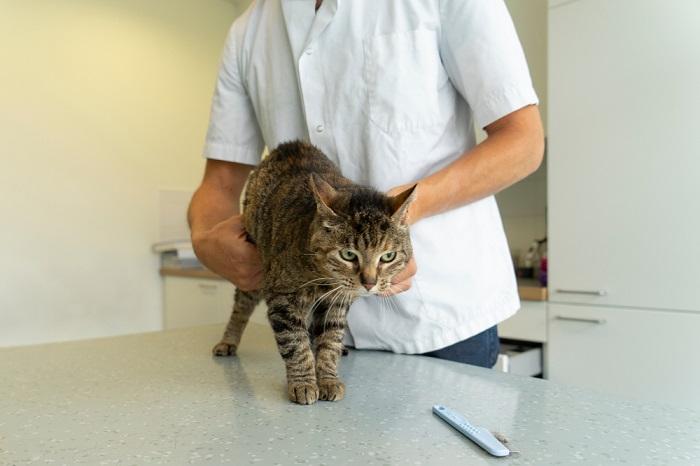
Getting your cat used to gentle handling is helpful at home and also in the veterinarian’s office.
Ideally, prepare for the event before it even happens. Diarrhea or old age might make your kitty pretty grumpy when it comes to grooming, probably because they are sore or feeling under par. Make sure your cat is used to being gently handled for short periods well before it is needed.
It seems so simple, but patience is most definitely key. Some cats will happily lie on your lap and allow a full body check and coat comb, whereas others can feel terrified at the thought of being held.
Over several weeks gradually get your cat used to being gently restrained in whatever way they find most comfortable. For cleaning under their tail, this often means on your lap or on a table.
If you have another person to help you, then this is ideal. They can hold your cat gently to them, passing an arm around your cat’s body and their hand under their chest. Your helper’s free hand can be used to steady, fuss, stroke, or feed treats to your cat. Don’t forget, the moment your cat looks worried, you should stop.
You do not want to cause panic and undo all your hard work. For some cats, less is indeed more. In fact, anything beyond the lightest of restraint can panic them. For these cats, desensitization and conditioning are crucial, so keep reading.
Also Read: 11 Best Cat Brushes & Deshedding Tools For Long & Short Haired Cats
2. Offer Their Favorite Treats and Rewards
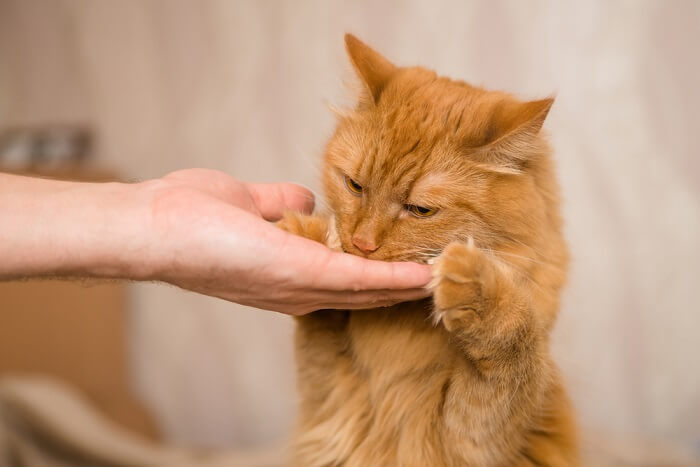
Offering high-value treats or food can go a long way toward helping cats accept necessary grooming.
Amazingly some cats can be conditioned to food—they associate certain events and actions with a positive reward and will happily comply to receive their prize. If your cat loves treats, consider offering treats while handling and cleaning them.
Make sure that there is an extra special treat for when the task is completed, too. Be mindful of what you offer, though. If your pet has a dodgy tummy, don’t give them lots of cheese or cream, as that is a surefire way to make their problem a whole lot worse!
Also Read: The 7 Best Calming Cat Treats
3. Try Distraction Methods
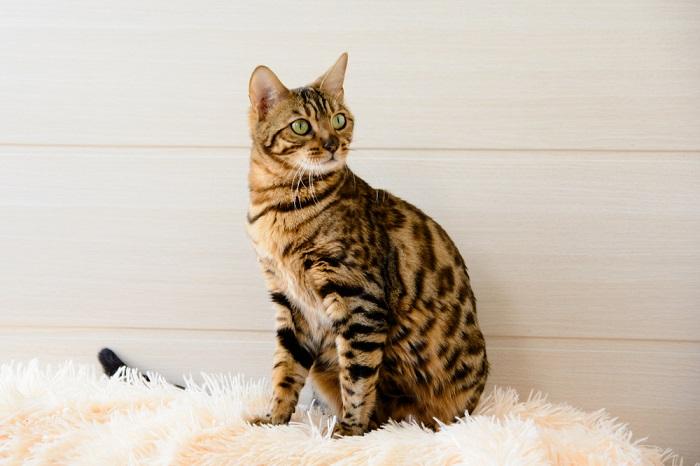
Simple distraction techniques can help a cat stay still for cleaning.
Some cats, particularly kittens, are easily distracted. Does your cat have a favorite tickle spot or toy? This is the time to draw on this secret weapon! Of course, this is easier if you have an assistant who can offer this distraction during and after the cleaning session.
A really good ear rub will send some cats into a state of hypnosis—perfect for cleaning their rump with minimal stress! Kittens might be distracted by food or a static toy. Even just some fingers tapping and moving on the table in front of them can be enough to hold their interest.
Also Read: The 12 Best Cat Toys: Keep Your Cat Fit And Happy With These Irresistible Toys
4. Show Them It’s Not Scary!
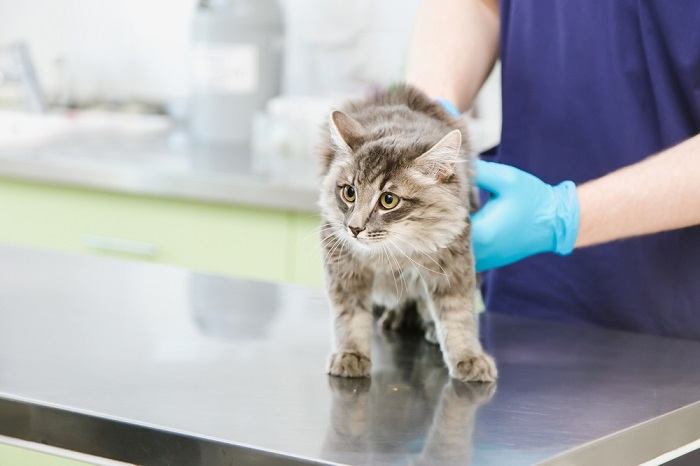
If your desensitizing efforts have not completely settled your cat, they still might submit to washing if everything is done very slowly.
Desensitization is so important. Essentially this means getting your pet used to what is happening and showing them it won’t hurt. In vet clinics, it is common to take rectal body temperatures using a thermometer.
In most cases, if you can earn an animal’s trust (and you are super gentle), they are not actually bothered by it at all. The fear often comes from the thought of what might be about to happen. Nervous cats may respond to these steps if everything is done very slowly.
Also Read: Top 10 Things Your Vet Wishes You Knew
Cotton balls and pads are soft and easy to use for washing your cat. Try wiping a dry cotton pad over your pet’s face and body at first. Many cats really enjoy this part of grooming and will rub their face onto the cotton. Don’t forget to wear gloves; some conditions, such as toxoplasmosis, can pass from cat feces to people.
When your cat is settled, gradually move toward their rear end. Gently lifting their tail is the final part of the desensitization before you start to clean. You may need to practice and reward this action before you can start cleaning properly.
Also Read: Best Cat Grooming And Deshedding Gloves
5. Warm up the Water

Using warm water to clean your cat’s butt makes the experience more pleasant for them.
Never use cold water on your cat’s butt unless you are instructed to do so by your vet. Just like us, our cats have sensitive skin, and this may be a shock. Warm the water to body temperature, using this water, possibly with an antibacterial cleansing product, to initially dab at your pet’s bottom.
If they allow, then progress to washing in a circular motion with a pet shampoo until they appear clean. Any pet shampoos or cleansing products should be removed from the area with wet cotton afterward. Placing a towel underneath your cat can be more comfortable to stand on and collects any excess water.
If you have a longhaired cat, it may be necessary to gently clip their fur shorter to remove the worst of the soiled hair. Matted hair is a health risk and can cause great discomfort.
Nowadays, there is a range of small, quiet pet clippers available, although you may need to gradually acclimatize your pet to the sound and action of clipping their fur. However, never use scissors; injuries are common and very unpleasant for your cat.
Also Read: How To Bathe A Cat? (A Step By Step Guide)
6. Ask a Professional
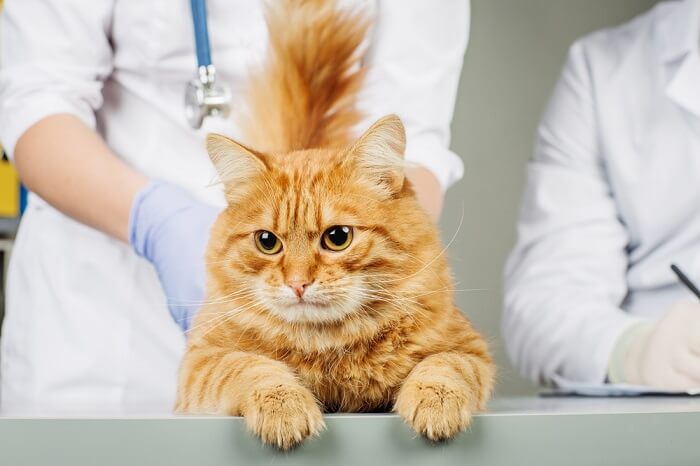
If you are struggling to clean your cat’s bottom, ask your veterinarian or a pet groomer for help.
If, despite everything, this feels like an impossible task, do not struggle alone. If your cat becomes very distressed, you will only make things harder for you both in the long term. After all, you are doing this to keep your cat healthy and happy. Pet groomers are trained in grooming cats and have all the right equipment to do so.
Have a chat with your local groomer and see if they offer a feline-friendly service and whether they might be able to help. If your cat is showing stressed behaviors or needs to be cleaned more urgently, speak to your veterinarian.
Vet techs can be extremely helpful in advising on home grooming or offering help in the clinic, and your vet can discuss whether your cat may benefit from any anti-anxiety medications or even sedation to help them through the process.
Also Read: Stress In Cats: Causes, Symptoms, & Treatment
Frequently Asked Questions
Why is my cat’s bottom dirty?
There are a huge number of reasons that your cat has a dirty bottom. If this is a very new finding, make sure you monitor your pet for any underlying issues and speak to your vet if you are concerned.
Longterm diarrhea can cause dehydration and may indicate a more serious underlying problem. You can read more about diarrhea in cats here.
Common reasons your cat’s butt might be dirty include:
- Long hair catching poop in breeds such as Persians
- Short-nosed breeds that struggle to groom
- Obesity that is stopping your cat from reaching their bottom
- Illnesses or food allergies causing a stomach upset
- Old age due to senility or arthritis
- Kittens with worms or other gut parasites
- Stress causing loose stools or emptying anal sacs
- Injury causing pain when grooming
- Issues with your cat’s litter box. Read more.
What products can I use to clean my cat’s butt?
Warm water is fine to use, although if there is a lot of mess, you may need to clean the fur more thoroughly. Products containing chlorhexidine suitable for topical use in pets are generally a safe bet. These have antibacterial properties and don’t tend to cause irritation.
Pet shampoo that is gentle or soothing may also be ok, but take care not to use any products that sting your pet’s skin. Avoid products with strong odors, as this may cause undue stress to your cat. Ideally, all products should be rinsed away with warm water on a cotton pad after use.
If a product is designed to be left on the skin, this should be outlined in the application instructions. Pet cleansing wipes can be used but may not taste nice if your pet tries to groom afterward.
If your cat’s anus is very sore from scooting or grooming, or they are prone to sensitive skin, your veterinarian should be able to advise you on what to use. Some cats will also require a small amount of soothing barrier cream to be applied after cleaning, but don’t apply any creams to their skin without discussing this with your vet first.
How often should I clean my cat down below?
Generally, cats will do a fantastic job of keeping themselves clean, and there is no need to interfere with their grooming routine. However, keep a close lookout for any issues down below. If there is any fecal residue on your cat’s skin or fur, it can attract flies that will lay eggs.
These eggs will hatch into larvae if not caught quickly, which can lead to the very serious condition of fly strike. If you think your kitty may have fly strike, seek urgent veterinary attention. Another potential complication of a dirty butt is urinary tract infections, particularly in female cats. If your cat is not keeping sparkly clean, then you need to help out.
Any time your cat’s bottom looks dirty, it is advisable to clean it. However, regular cleaning is only really needed in pets that are unable to groom themselves longterm. And, if this is not down to a conformational characteristic specific to your cat, it is important that you speak to your vet. Even obesity can be tackled more effectively with the support of your vet team.
Be prepared and get help if needed!
Cats are sensitive, and grooming is very important to them, so the sooner you can teach your cat to let you help when needed, the better. Even agile, short-haired cats may have issues in the future, and being prepared now will save a lot of upset further down the line.
And, if all else fails, never be afraid to ask for help; there is always a solution out there. Why don’t you try out some of these tips with your cat today? Your future self (and your beautiful cat) might thank you for it.
